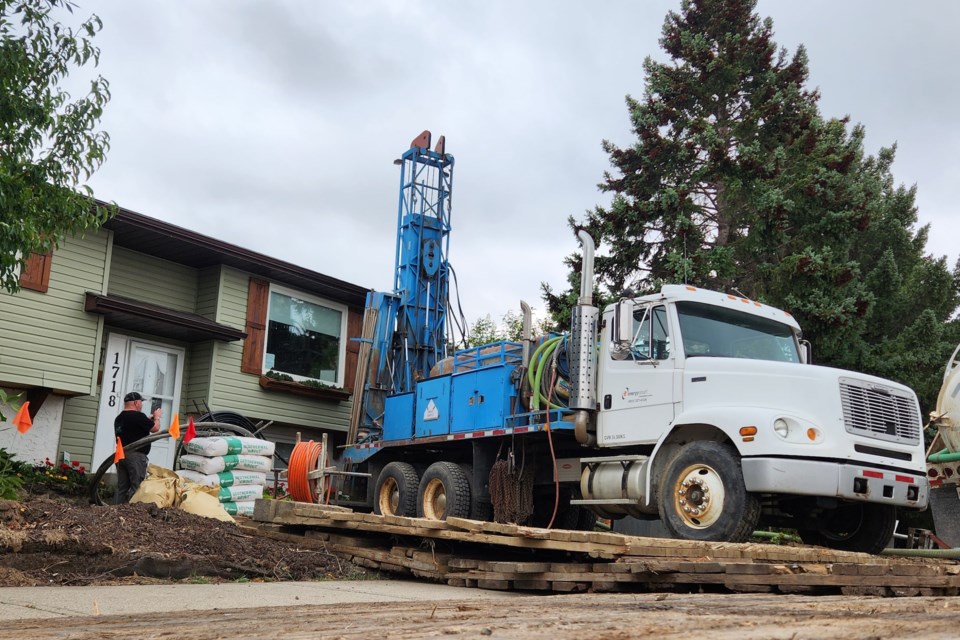With sustainability and green energy in mind, the Shannon family of Airdrie has accomplished transforming their 1980s bi-level house into a net zero home, and they say anyone can do it without breaking the bank.
And they are now being recognized for their green effort by the Canadian Geographic Live Net Bureau. The Shannons are one of eight families across Canada in the running for a $50,000 prize in their race to Net Zero as part of the organization's household carbon reduction challenge.
The families had to complete a series of carbon reducing home challenges in order to compete for the grand prize. The Shannons just completed their final challenge, but recognize there really isn’t a loser in the end as every family now has a more energy efficient home.
“They're all learning something and it's reducing greenhouse gas emissions, which is a win for everybody,” said Samantha Shannon in a recent interview with the Airdrie City View.
A win for green technology
For Samantha and her husband Kevin greening their home has long been a dream of theirs. But they started putting in a serious effort after qualifying for a $40,000 Canada Greener Homes loan from the federal government. Later, Canadian Geographic Live Net Bureau also provided $5,000 in seed money to take their efforts to the next level.
The Shannons started by replacing all their windows and added insulation to their attic to meet the current building standard. There were also many small projects, like placing gaskets around outlets and sealing up cracks.
A four-tonne geothermal heating system with nearly one km of glycol-filled pipe replaced their natural gas furnace.
“That's the thing that got a lot of people’s attention because I don't think our neighbourhood is really used to having an oil drilling rig in their neighbours front yard,” Samantha said. “There were eight foot trenches in our front yard for the first day of school as the kids were trying to walk to their kindergarten class.”
This upgrade allowed them to disconnect entirely from natural gas. They don’t even have the pipe that attaches to the house any more, Shannon said.
They installed a hybrid hot water tank that uses ambient home air temperature and electricity to heat the water and sealed up the envelope of the home as well as their air ducts using a specialized sealant.
“Therefore, you're not losing your heat out of these little tiny [cracks], and I'm no longer heating the joists underneath my floorboards or in my walls,” Samantha said. “I'm actually getting the heat to where I want it to be, such as my office, which is no longer cold anymore.”
The final piece was their 19 kW solar array.
“That's what actually ends up making this net zero and carbon neutral, depending on your definition, but we don't burn any combustibles to heat or run our house,” Samantha said.
The Shannon’s were also proud to have used a lot of Airdrie businesses in their project.
Benefits on balance
When the Shannons calculate how much their mortgage went up in qualifying for the Canada Greener Homes loan, this cost is largely offset because their bills are currently cheaper than when they were hooked up to the natural gas grid, Samantha said.
“It was a theory on paper when we started to go through all of this,” she said, noting their bills this winter were still $2 cheaper than their highest winter bill prior to going net zero.
In the end, Samantha calls that a win for green technology.
For those who want to give it a shot, Samantha said their first step should be to approach the experts to get a plan in place, and that net zero doesn’t have to be the final goal.
Without the help of the experts and their plan, Samantha said she would have been completely overwhelmed.
Samantha said it wasn’t until she worked on a documentary project with a building scientist that their dream project came into focus.
“The very, very, very first start in any of this is to get a home assessment done and it was a requirement [for the] Greener Homes Loan,” she said.
Their professional home assessment included a customized plan to achieve their net zero goal. From there, they started gathering quotes and planning the next steps, she said.
“It can be a phased approach that could be anywhere from a couple of weeks or months to… we've been five years to get to this point,” Samantha said.
To learn more about their project and check out the household carbon reduction challenge, go to canadiangeographic.ca/live-net-zero/households/shannon




